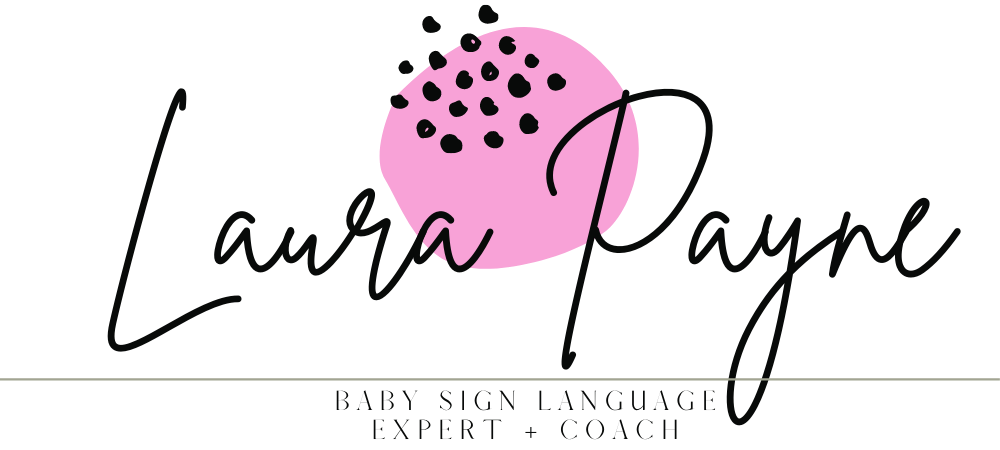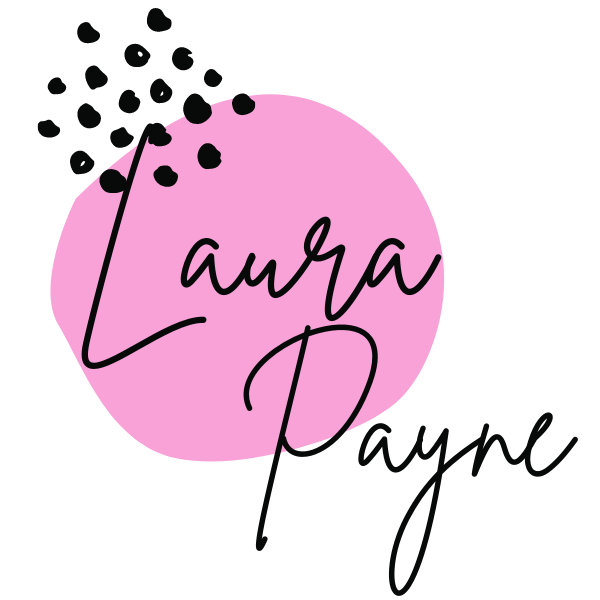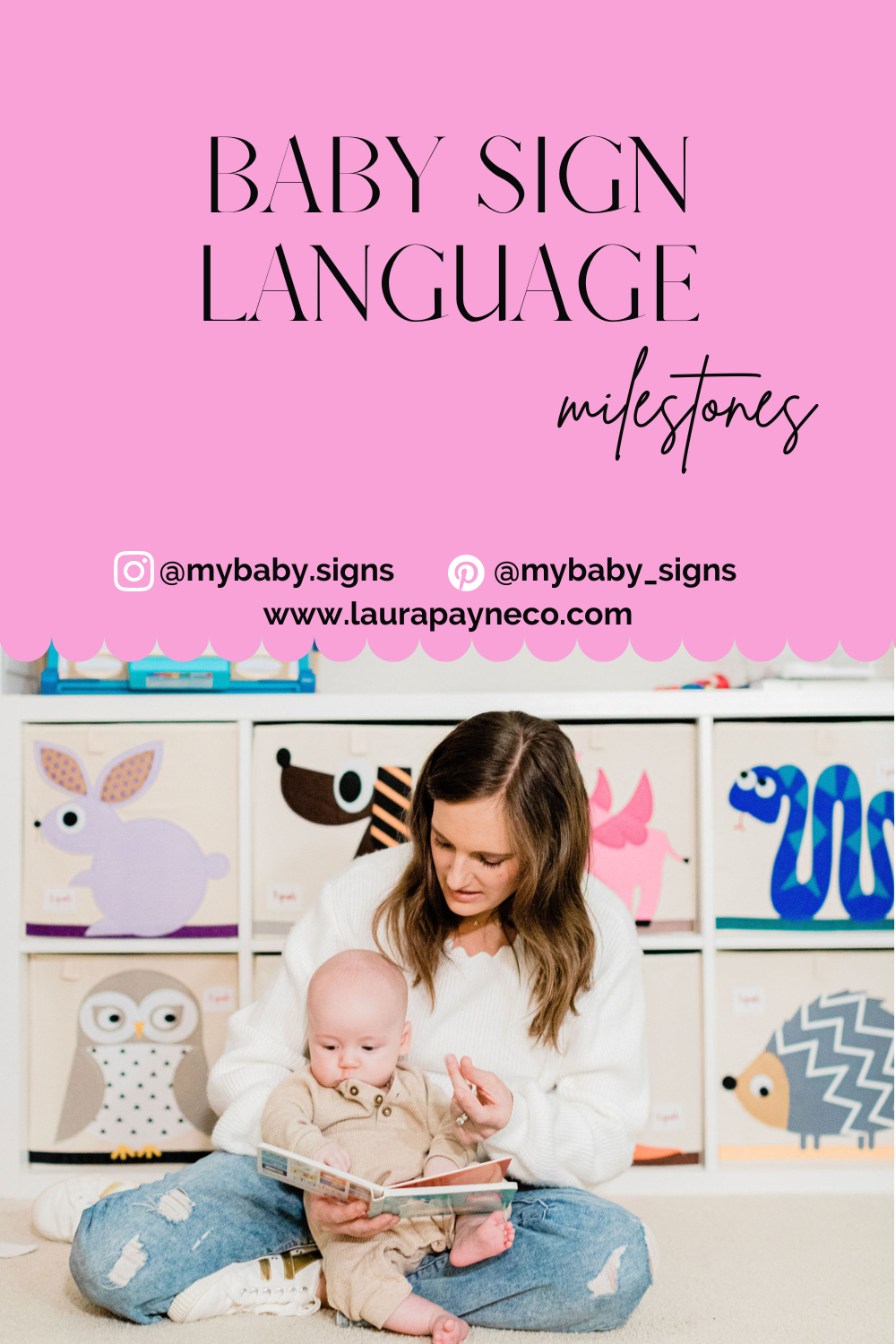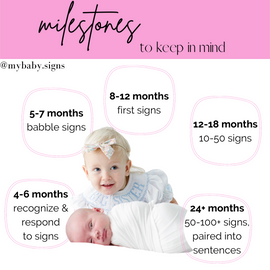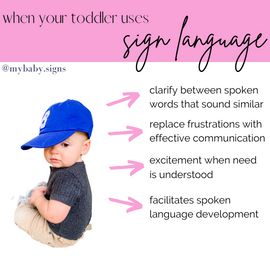Baby Sign Language Milestones
As a parent yourself, you are not a stranger to your little one’s milestones. Whether it’s at the pediatrician’s office, the baby book, talking with friends, or on a Google/social media rabbit hole - milestones are everywhere: holding their head up, sitting up, babbling, crawling, first words, first steps… the list goes on.
When parents use sign language with their babies, many questions come up such as “when will they sign back to me?”
And just like with all other areas of your child’s development, sign language has milestones as well! Let’s dive into them so you have a better idea of what to expect regardless if your young child is 4 months or 24 months old.
If you don’t already, please follow me on Instagram for more about how sign language can be a game charger for your baby / toddler’s early communication skills.
First, something you should know about sign language milestones:
Milestones can and will vary. Afterall, your child is an individual and unique! Just like some children walk before their first birthday, and some after their first birthday. The milestones I describe in this article are averages.
The milestones I share below begin around 4 months of age. If you are beginning your sign language journey with your 10 month old (for example), you can expect these milestones to be a bit different, but will typically still occur in the same order. First, they will recognize your signs, then babble, and so on and so forth.
Just like I share in this blog post - it is never too early or too late to start! When you start to use sign language with your baby or toddler is the right time for you!
These milestones tend to be earlier than the milestones of spoken language development (see the *CDC developmental milestone guide here). As with all other milestones, if you have a concern about your child’s development (sign language included), please reach out to your pediatrician and/or request an evaluation by a speech-language pathologist.
*Yes, I am aware of (and agree with) the opinion of many experts and therapists on these updated milestones. Regardless, sign language milestones do tend to be earlier regardless of the old vs new milestone guidelines.
Want to use sign language with your little one?
Get Started Now with 10 functional ASL signs to start using with your baby or toddler right away. Learn 3 tips to ensure you are using signs correctly and with realistic expectations. Whether you have already started signing, or just warming up to the idea, this free guide will take you one step closer to your goal!
Look Who’s Signing Now is my signature four part course that teaches you the exact blueprint I use to teach my own children sign language. Beginning with the foundation of why and when to use baby sign language, how to implement it, and what signs to use. With this self-study e-course, you will have the confidence to sign with your baby and boost their early communication while reducing frustrations, tantrums, and time wasted playing the guessing game.
Check out my online resources for parents! Browse my current offerings.
5 sign language milestones for babies and toddlers
Recognize and respond to your signs
Your baby can recognize signs much earlier than he/she can sign back to you. When your baby begins to recognize signs (sometimes as early as 3 months, but usually between 4-6 months), it is a pretty exciting feeling!
Your baby may recognize your signs by showing these response cues:
👀their eyes may open big & wide, very alert and focused on the sign
👅they may give the biggest open mouth smile & a sweet baby giggle, excited for what was to come
😭if they are already crying, they may actually cry LOUDER because they are getting hangry
💪🦵their arms and legs would kick and punch in excitement, pumped that her needs are being met
2. Babble in sign language
Babbling in sign language is part of natural language development, just like babbling sounds! Once your baby is recognizing your signs, they may start to babble in sign language around 5-7 months old.
Your baby is babbling in sign language when:
💫the sign is being used out of context
💫your baby is not interested in your reactions
💫your baby is using the sign over and over again
My son is babbling the sign for MILK in this reel - check it out here!
3. First signs emerge
Usually between 8-12 months, your baby may use their first sign.
Keep this in mind: just like with spoken words, your little one's signs will not necessarily look like your signs. And that is A-OKAY!
Even if it doesn't look like our correct model (like some may say "mo" rather than "more" early on), this is still meaningful communication that should be praised and celebrated! Their signs will begin to look more like yours as they get older, much like spoken words.
4. Sign Language Vocabulary Grows (10-50 ASL Signs)
Between the ages of 12-18 months, the sign language vocabulary for your young toddler can really start to take off! This is when you want to include ASL vocabulary beyond the basics so they aren’t just signing “MORE” for everything, and everyone is frustrated (yet again).
What to expect when using sign language with your 12-18 month old:
👦he is highly motivated to express his needs and wants
👧she will learn new signs in a few days or weeks
👦he may have a sign vocabulary of 10-50 words
👧her signs will not look like yours
👦he will combine using some signs and some spoken words
👧her tantrums may not last as long
👦he may have an increased confidence in his ability to communicate with you more effectively
5. Combining ASL signs
Near their second birthday, you can expect your toddler to start pairing 2 or more ASL signs. Usually this happens a few months earlier than they will start to do this with their spoken language vocabulary.
Toddlers who use sign language to communicate can learn new signs within minutes or a few days. This fast learning process can help them to:
🤟clarify between spoken words that sound the same (like “ball” and “book”)
🤟replace frustrations with effective communication (instead of screaming and banging on the table or highchair, they can sign “MORE BLUEBERRY.”)
🤟show excitement when their need is understood (thus giving them reason to continue using sign language)
🤟communicate more using spoken language (remember, sign language facilitates spoken language development!)
These milestones have hopefully shed some light on what to expect along your sign language journey in a way that is exciting and useful all at the same time!
